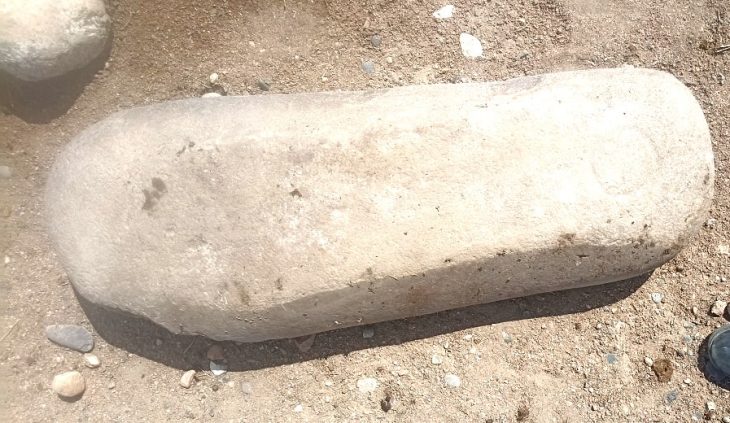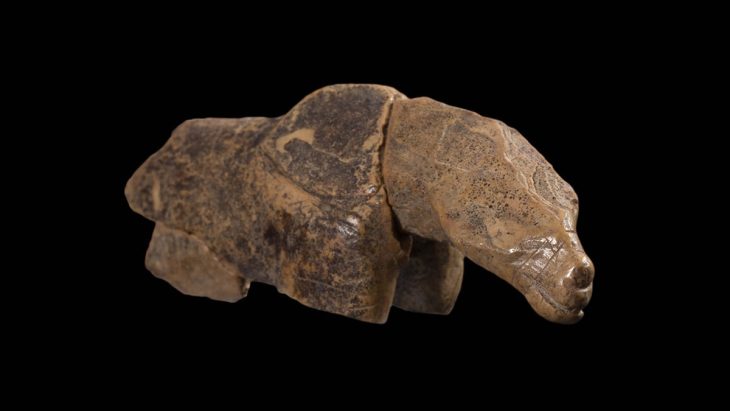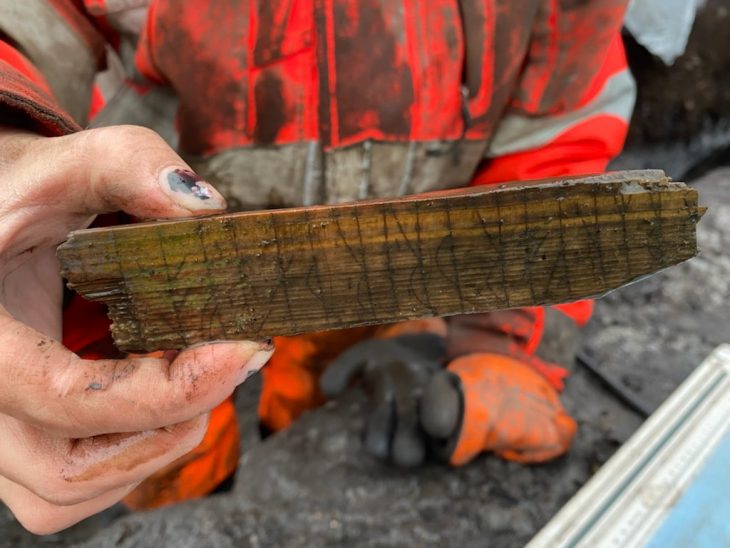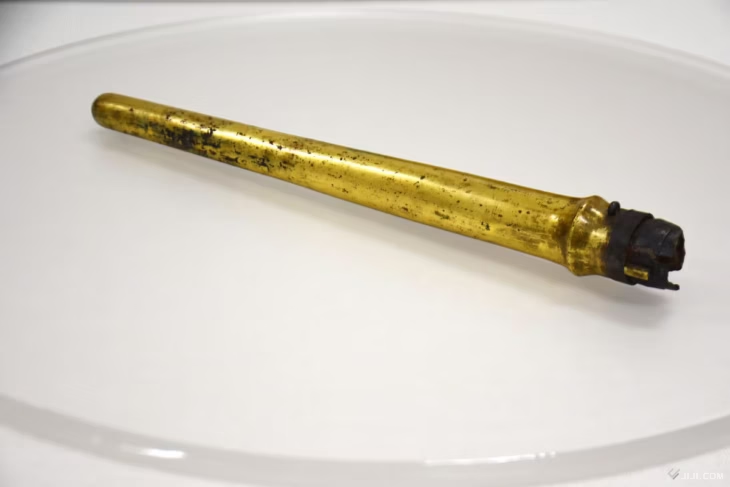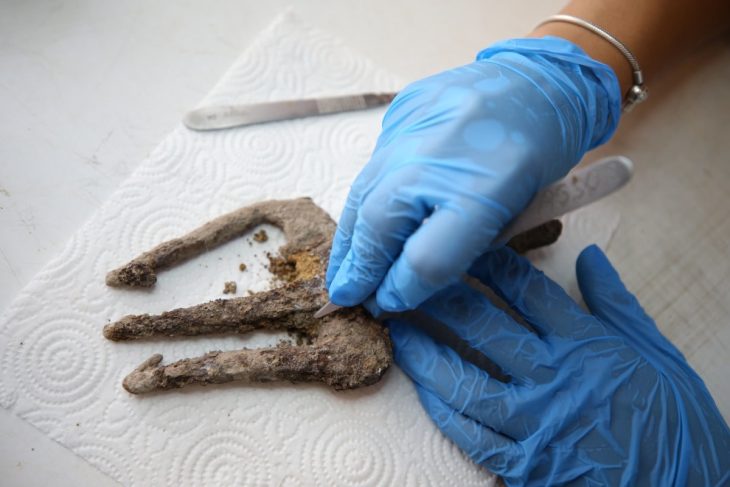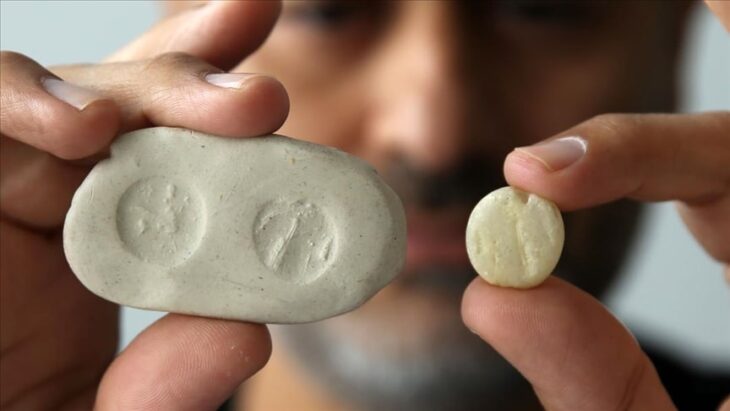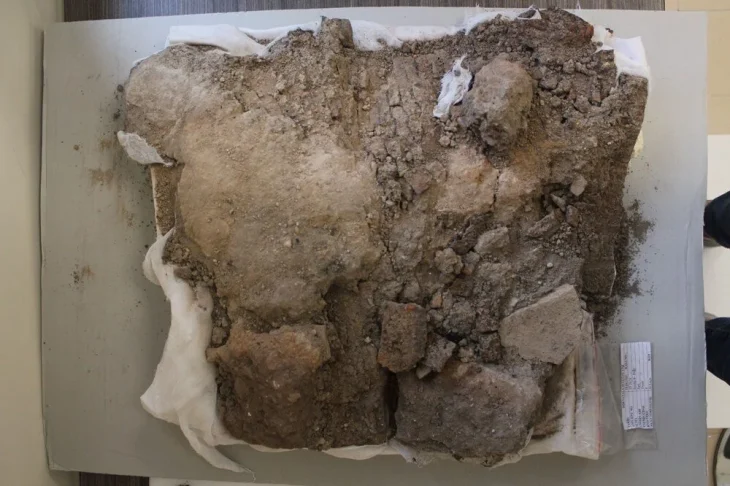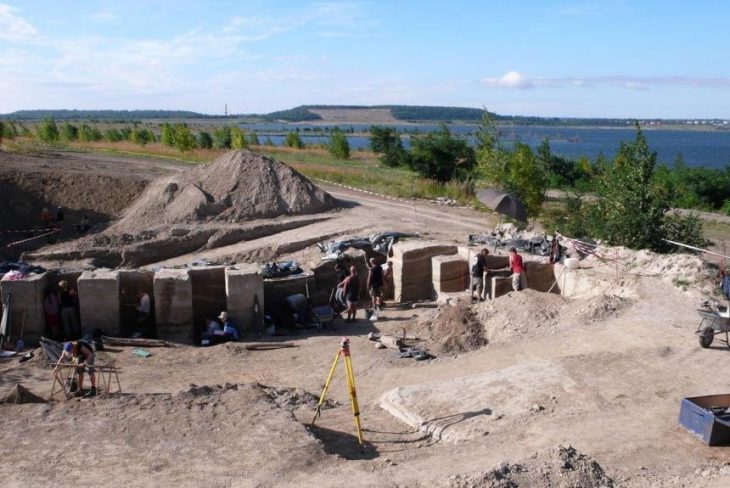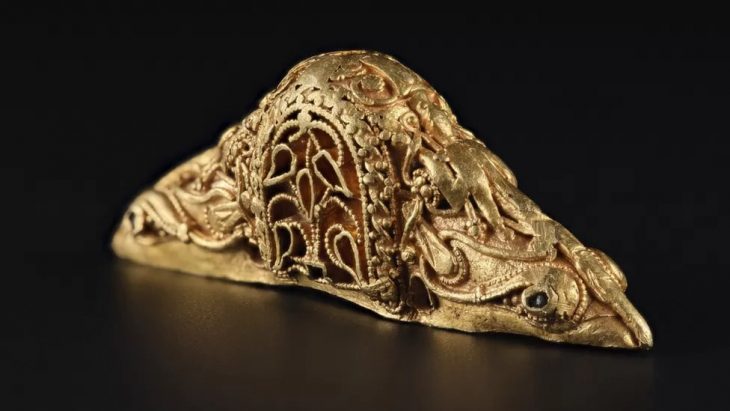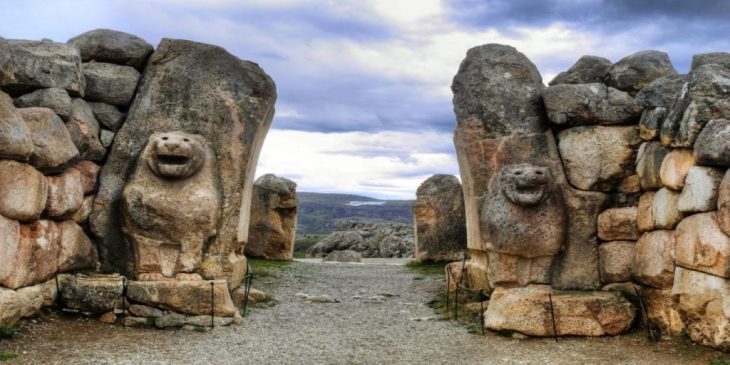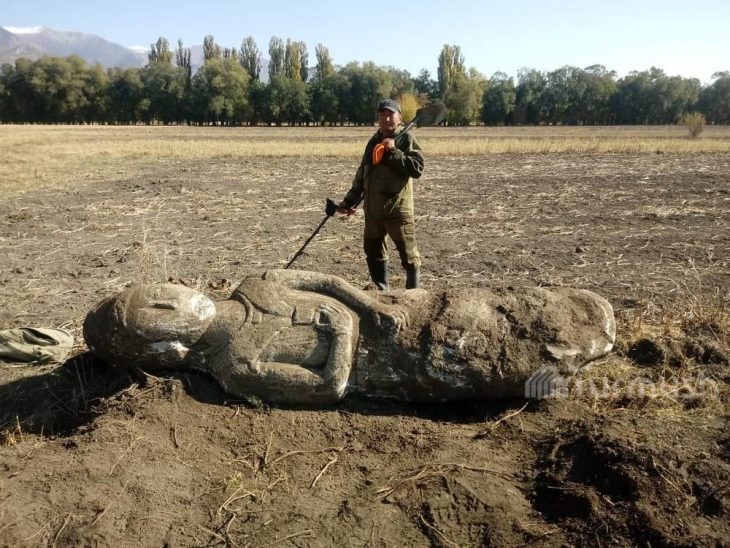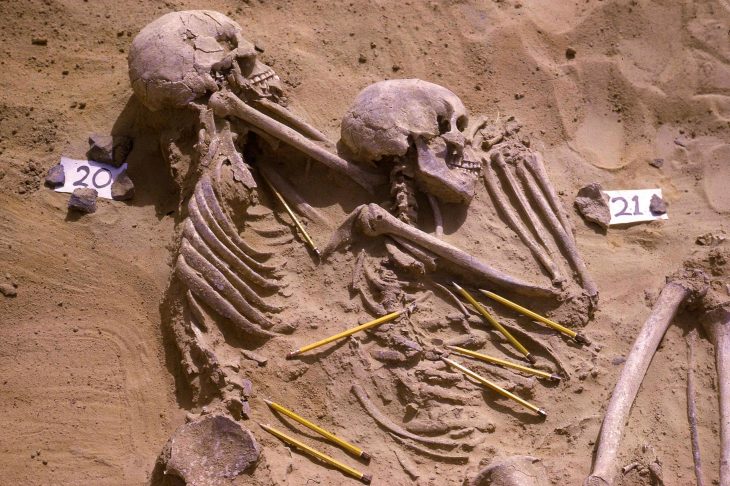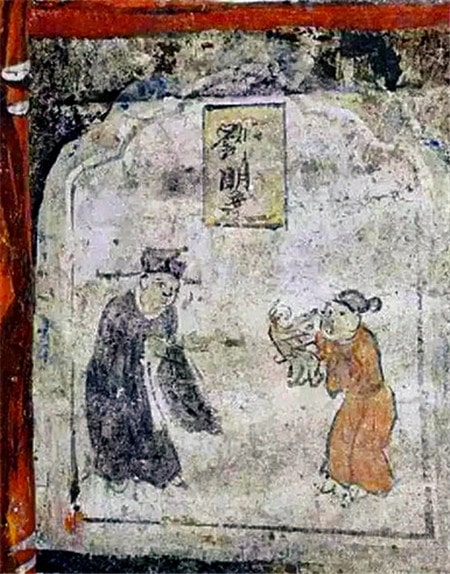Archaeologists discovered mummified skeletons dating from the 2nd century A.D. within two sarcophagi at the Hisardere Necropolis in Bursa’s Iznik district.
The excavation is being conducted out by the Ministry of Culture and Tourism under the direction of Aygün Ekin Meriç, an academic at Dokuz Eylül University’s Archeology Department in western Izmir province.
Dokuz Eylul University Faculty of Letters, Archeology Department Lecturer Assoc. Dr. Aygün Ekin Meriç told reporters the necropolis was extensively used during the second and third centuries, and that they have found six sarcophagi in total in the region to date with the addition of the two recent findings.
Unique chamber tombs dating back to the third century were also discovered, he said, noting how spectacular the two newly discovered sarcophagi are.
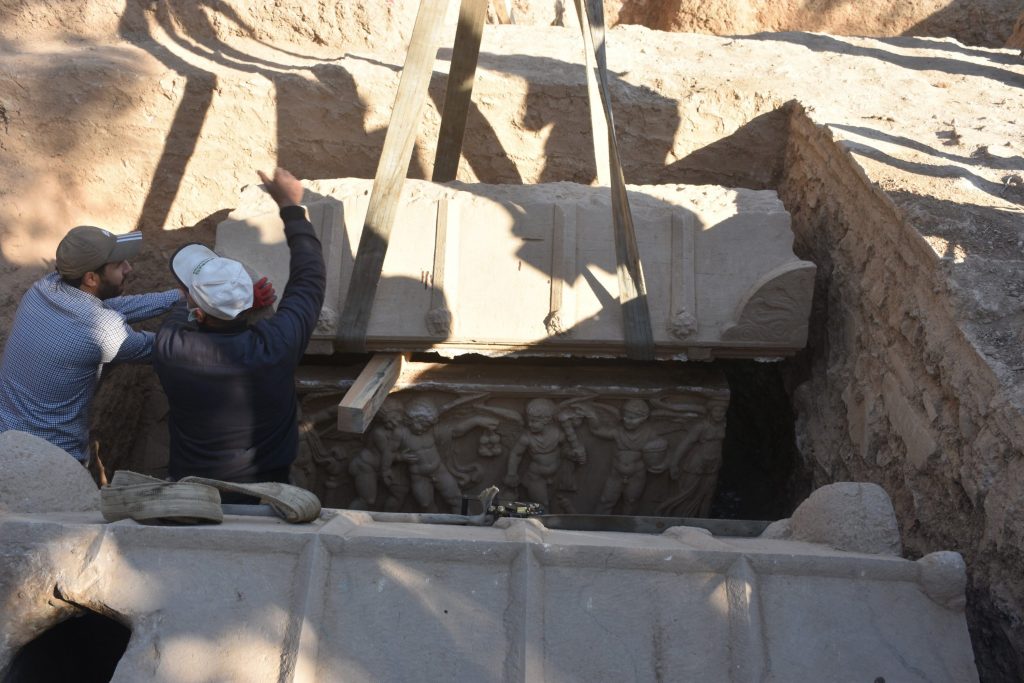
“Along with the sarcophagi, there are chamber tombs, especially from the 3rd century, unique to Iznik, unmatched anywhere else, with painted interiors and decorated with ornaments. At the same time, these two latest sarcophagi are very ostentatious. The sarcophagi were made during the Roman Imperial Period, in the 2nd century. The two came out side by side. Very showy sarcophagi decorated with Eros reliefs on three sides,” he said.
📣 Our WhatsApp channel is now LIVE! Stay up-to-date with the latest news and updates, just click here to follow us on WhatsApp and never miss a thing!!
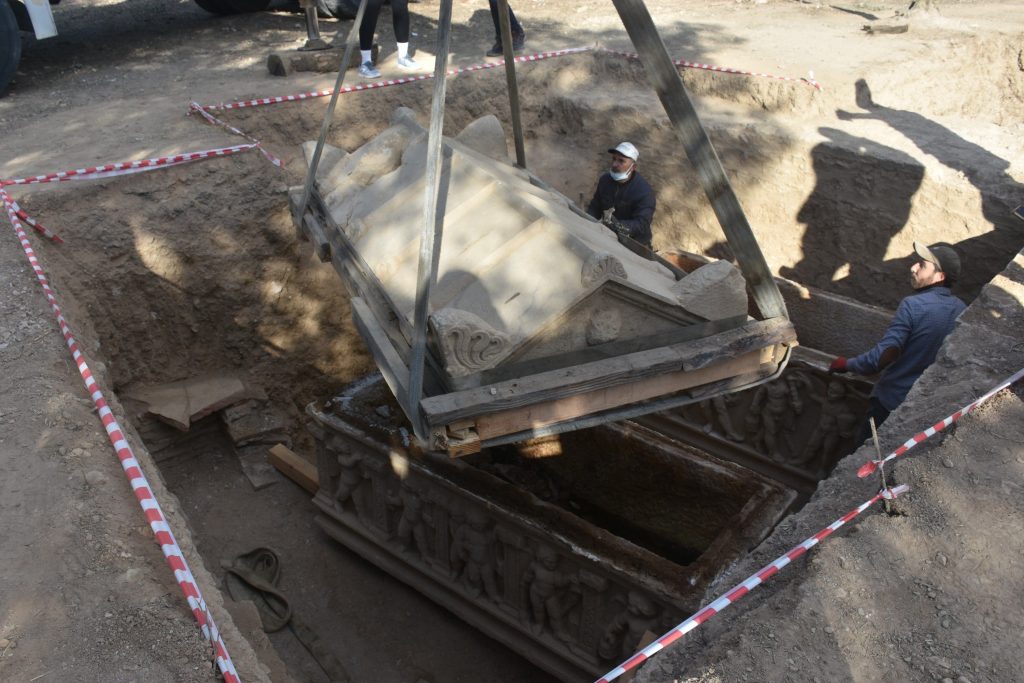
Meriç stated that sarcophagi were unearthed in the illegal excavations carried out in the region since 1989 and that the area was expropriated in 2018 and scientific excavations began in 2019.
Meriç also added that they are excavating a holy basilica built in the cemetery area.
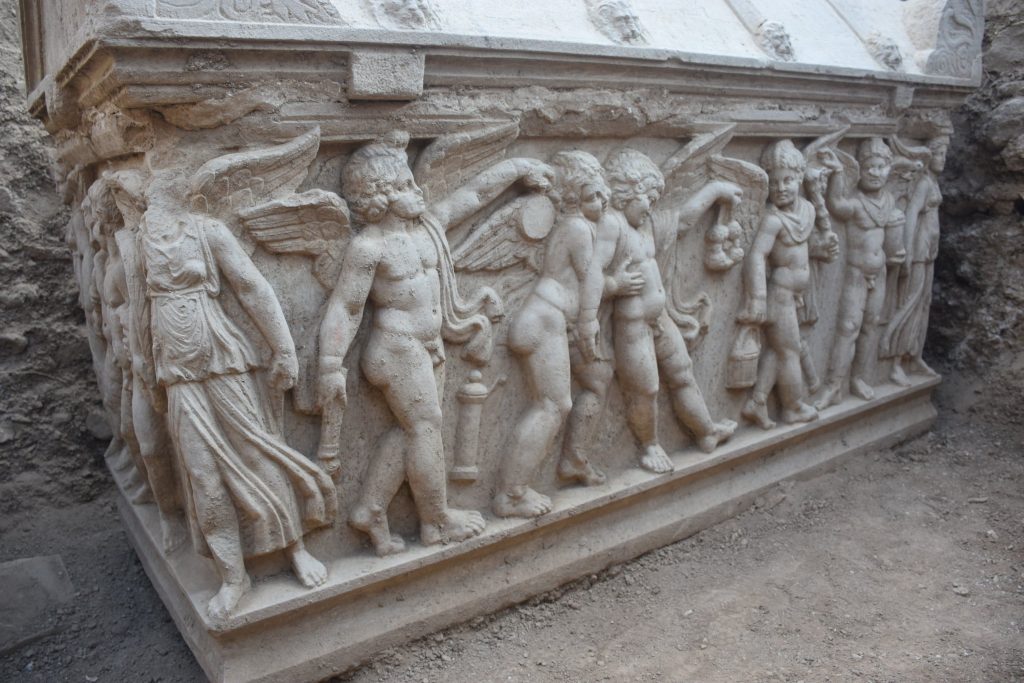
Pointing out that they also found a small inscription on the mosaic in the basilica, Meriç said, “A woman’s name is mentioned. The basilica was built in honor of the woman. No name, only the feminine epithet preserved. Excavation of the apse part of the basilica has not been completed. We will more or less reveal the plan of the basilica in the next period of excavations,” used the phrases.
Meriç said that the basilica is 30 meters wide and 50 meters long, and they think that it was built in a plan similar to the basilica in Lake Iznik from the course of the walls.


